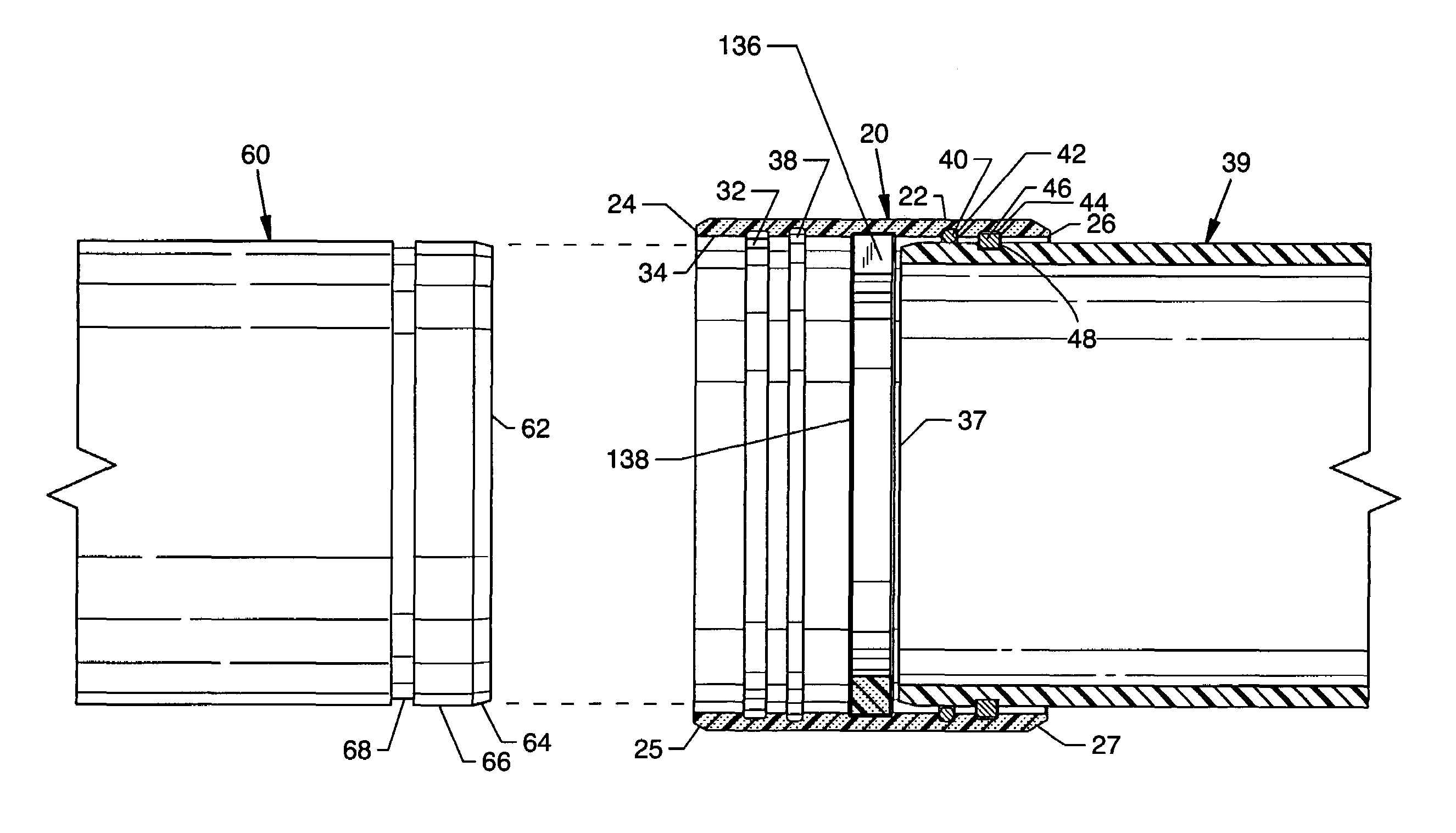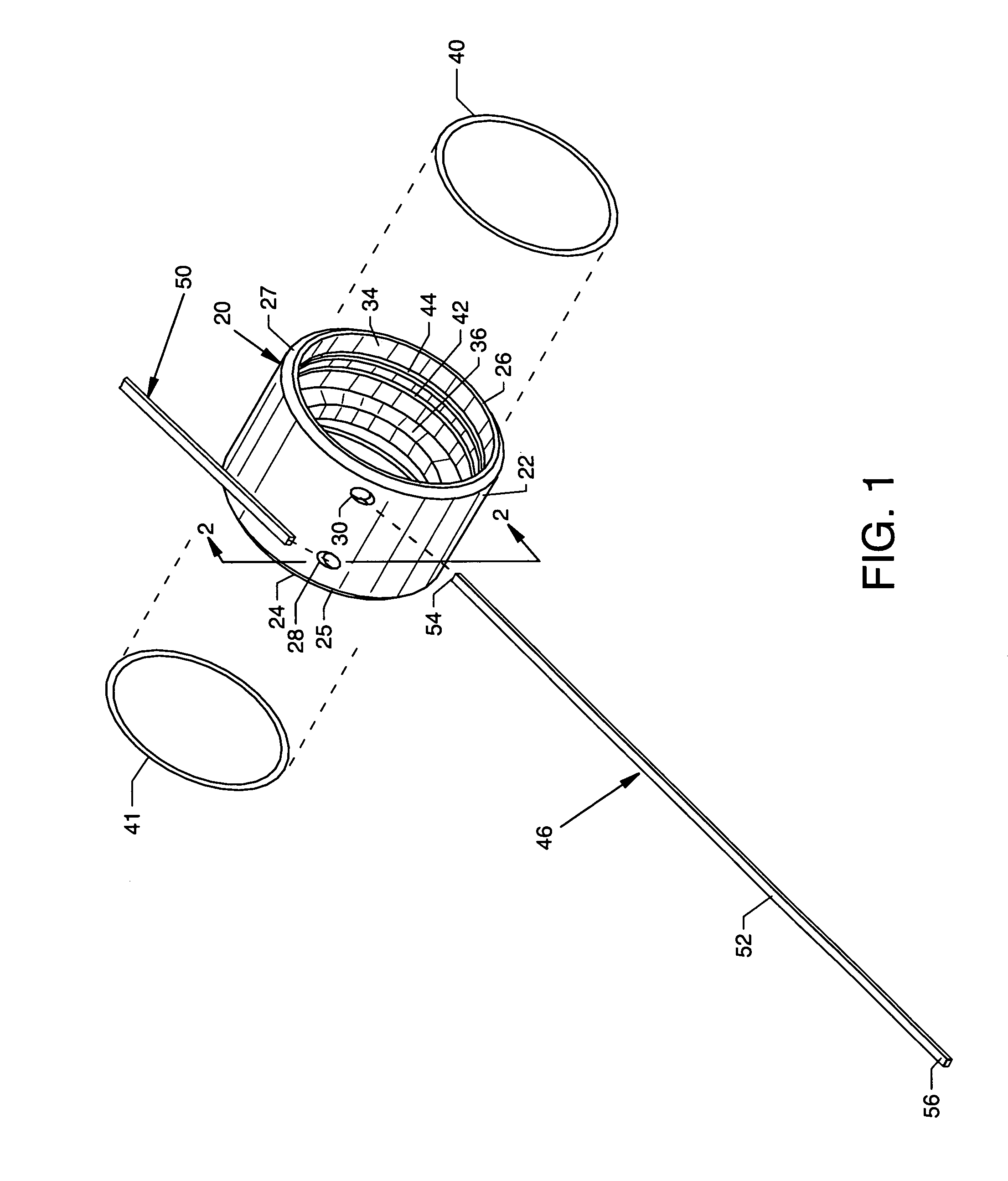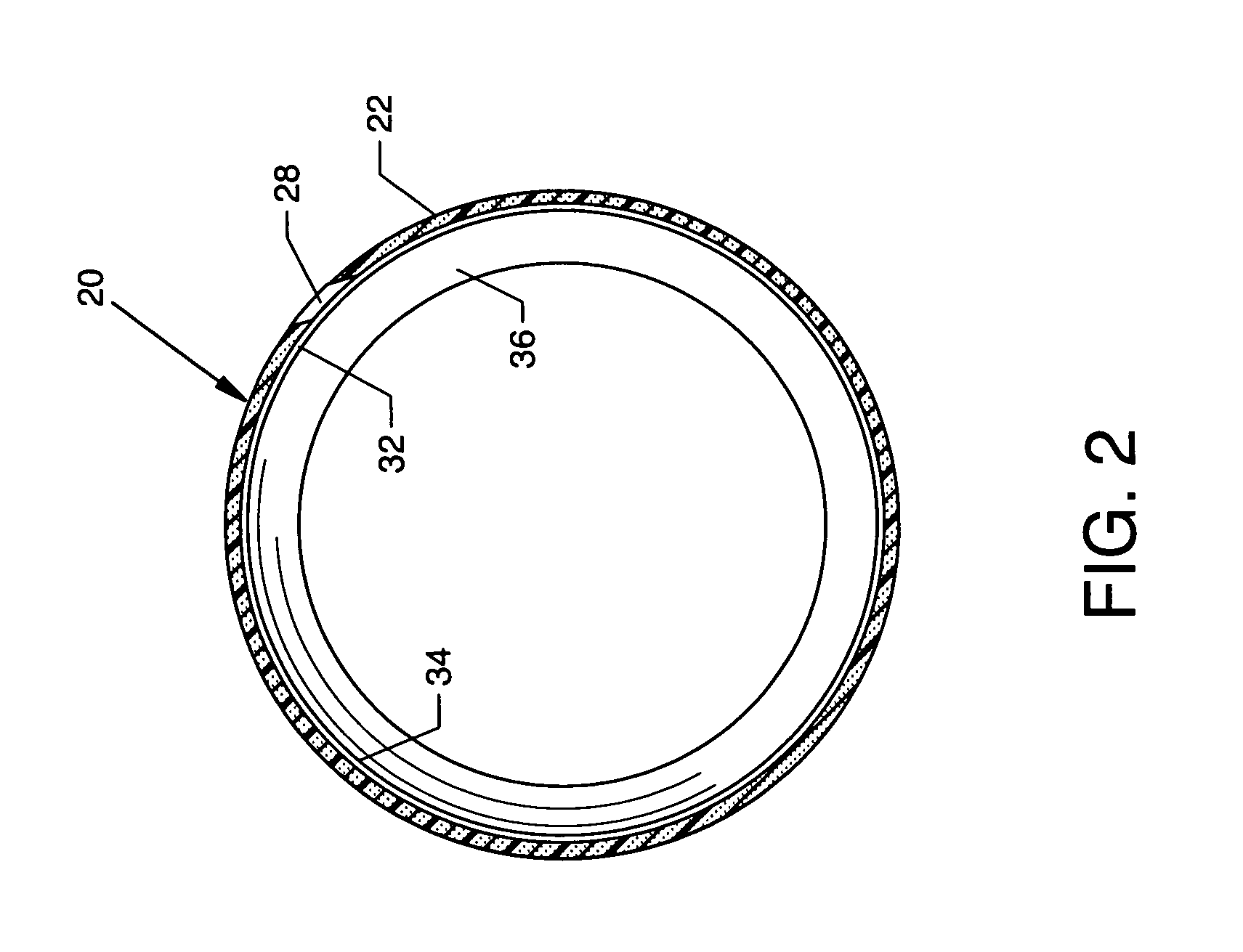Filament-wound composite coupling
a composite coupling and filament technology, applied in the direction of couplings, gas/liquid distribution and storage, vessel manufacturing, etc., can solve the problems of mechanical failure of metallic couplings, corrosion of traditional metallic pipes, etc., to improve assembly rates and improve axial tensile strength
- Summary
- Abstract
- Description
- Claims
- Application Information
AI Technical Summary
Benefits of technology
Problems solved by technology
Method used
Image
Examples
Embodiment Construction
[0034]By “large diameter pipe” herein is primarily meant pipes of 16 inches OD or greater. Two preferred pipes, useful in practicing several aspects of the present invention, are available from Certainteed Corporation, Valley Forge, Pa. as C905 / RJ™ DR25 (part number 29128) and C905 / RJ™ DR18 (part number 29127) Restrained Joint PVC Pipe, which are both 20 foot polyvinyl chloride pipes of about 17.4 inch outer diameter with a complementary retaining groove located about 3.610 inches from each end of the pipes and thus capable of use with the Certa-Lok™ Restrained Joint system of CertainTeed Corporation. Another preferred pipe is Certa-Lok™ Well Casing pipe which is a 20 foot PVC pipe having an outside diameter of about 16 inches, also available from CertainTeed Corporation. Use of these preferred pipes with fiber-wound composite couplings of the present invention typically and preferably requires a 0.375 by 0.625 rectangular cross-section nylon spline of about 58 inches in length (Cer...
PUM
| Property | Measurement | Unit |
|---|---|---|
| winding angle | aaaaa | aaaaa |
| winding angle | aaaaa | aaaaa |
| outer diameter | aaaaa | aaaaa |
Abstract
Description
Claims
Application Information
 Login to View More
Login to View More - R&D
- Intellectual Property
- Life Sciences
- Materials
- Tech Scout
- Unparalleled Data Quality
- Higher Quality Content
- 60% Fewer Hallucinations
Browse by: Latest US Patents, China's latest patents, Technical Efficacy Thesaurus, Application Domain, Technology Topic, Popular Technical Reports.
© 2025 PatSnap. All rights reserved.Legal|Privacy policy|Modern Slavery Act Transparency Statement|Sitemap|About US| Contact US: help@patsnap.com



